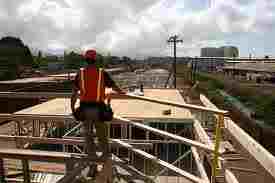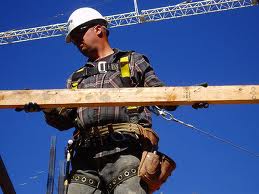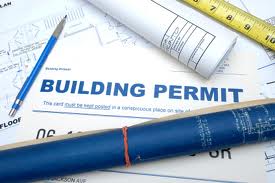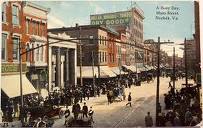Archive for the ‘Roofing Laws and Regulations’ Category
Laws Changes HOA Limits For Homeowners
 Anyone living in a neighborhood governed by a Homeowners Association knows the hassle that these organizations can bring to homeowners. Between high maintenance fees and strict rules, homeowners have very little freedom when it comes to making decisions about their homes. However, a new law makes some important changes to HOA rules that should allow homeowners more freedom.
Anyone living in a neighborhood governed by a Homeowners Association knows the hassle that these organizations can bring to homeowners. Between high maintenance fees and strict rules, homeowners have very little freedom when it comes to making decisions about their homes. However, a new law makes some important changes to HOA rules that should allow homeowners more freedom.
The Power Of Decisions
The Texas legislature passed new rules late last year that restricts some of the power of the HOA. Homeowners may now have the ability to make roof repairs and improvements that were previously prohibited. In the past, many HOAs did not allow homeowners to install certain roof materials or install rain gutter systems on their homes. Often citing aesthetic appeal and neighborhood consistency as their reason for denying certain homeowner actions, HOAs may not have to back down in certain instances.
The new law allows for the homeowner to install solar panels, green roofing systems and other energy efficient products without the HOAs approval in most areas. As part of the continued initiative to encourage more homeowners to participate in energy conservation efforts, recycled roof products and other roofing systems may be allowed regardless of previous HOA guidelines. One of the biggest changes will be the requirement of HOAs to hold open meeting for any major decisions and allow homeowners to vote regarding the implementation of such changes, putting the power back into the hands of the people.
Alabama Renovates Roofing Building Codes
On Tuesday the Baldwin County Commission approved upgraded building codes as a result of the catastrophic damage left by Hurricane Katrina. The new codes will improve roofing systems in residential structures and reduce insurance costs for homeowners.
The new code will require special nails; roofing staples will no longer be to code. Asphalt shingle roofs will require an underlayment of a synthetic, tear resistant polypropylene, polyester or fiberglass fabric certified by an approved testing agency.
Adding an Additional $50 To Building Permits
The new permit fees will be increased by approximately $50 to help pay for inspections. County building inspector Mike Howell said “When roofing goes, that’s where the damage is — from water. The new code will not add much at the time of construction, but retro-construction will be 10 times more expensive.”
County Mayors and Baldwin County Homebuilders Association have endorsed the new code. The purpose of the new codes for upgraded roofs is for added safety and to protect the homeowner.
Contractor Recovery Fund

Another reason to hire a licensed roofing contractor is you have more options of recuperating money or damages from improper or dishonest conduct on behalf of your contractor. The Contractor Recovery Fund is a form of financial protection provided by licensed residential contractors to residential consumers.
Most states have a contractor’s recovery fund that compensates owners or lessees of residential properties who have suffered an actual and direct out of pocket loss due to licensed contractor’s fraudulent, deceptive or dishonest practices, conversion of funds or failure of performance.
Fraud
“Improper or dishonest conduct” includes the wrongful taking or conversion of money, property, or other things of value which involves fraud, roof material misrepresentation or conduct constituting gross negligence, continued incompetence, or intentional violation of the Uniform Statewide Building Code.
The recovery funds are supported by assessments and fees paid by licensed contractors. To be eligible for the fund, you must be awarded a judgment in a court of competent jurisdiction against a licensed contractor.
How to File a Claim
Generally to file for the compensation, the state you are in will want you to exhaust all other avenues to recover damages from your contractor. Once done, you will need to supply a copy of your original contract, a copy of the certified award of judgment by a court within 2 years after the commission of the act on which the claim is based , proof of payments to contractor, and any other documents to support the claim. Some states require you to obtain 2-3 bids to complete the repairs.
If you feel your contractor has misrepresented himself or has defrauded you, type in contractor recovery fund and your state to find out what options you may have.
Court Ruling Outlines Liability For Roof Subcontractors
 Homeowners pay good money to have their roof repair conducted in a professional manner. Roof contractors are expected to perform high quality work that requires a specific skill base and licensing. Unfortunately, many homeowners have learned the hard way about the dangers involved when roof contractors outsource the work to cheap subcontractors.
Homeowners pay good money to have their roof repair conducted in a professional manner. Roof contractors are expected to perform high quality work that requires a specific skill base and licensing. Unfortunately, many homeowners have learned the hard way about the dangers involved when roof contractors outsource the work to cheap subcontractors.
Sub-standard Repair
A Tennessee homeowner performed due diligence by interviewing multiple roofers and obtaining several bids before deciding to hire Winters Roofing Co. A few weeks after the new roof was installed the homeowners contacted the company to inform them about the leak and a subcontractor was sent out to perform the repair. The subcontractor used a propane torch to repair the roof causing the home to catch fire a few hours later. Fire investigators concluded the open flame used on the roof was the cause of the fire, which caused more than $870,000 in damages to the home.
To make matters worse neither the roofing company nor the subcontractor had an liability insurance. The homeowners insurance company sued the roofing company stating they were to be held liable for the negligence in hiring and lack of supervising the subcontractor during the work. Eventually, the case made its way to the Tennessee Supreme Court, who ruled that the roofing company was to be held liable for the damage caused by the hired subcontractor. The 5-0 ruling confirmed the idea that the roofing company was to be held liable for the entire contract and work performed, even if the work was contracted out. The court ruled that contractors have a “duty to perform services in a careful, skillful, diligent and workmanlike manner” that cannot be responsibly delegated to a subcontractor.
More Debate over OSHA Rules

The debate still is going strong over the new OSHA fall-protection rules. The stricter safety rules went into effect on September 15, 2011 after a 17 year exemption for residential contractors. Congress is getting involved in response to complaints by people in the building and roofing industries.
Senator Clair McCaskill gets Involved
10 St. Louis area homebuilders are the latest to file complaints regarding the harsher rules and hefty fines for violating them. Senator Clair McCaskill set up a conference call for the St. Louis homebuilders to air their concerns with OSHA officials in Washington.
Could Cost Jobs
Opponents of the new OSHA safety rules say it could add on to the price of a home by thousands of dollars. And in this economy, it could end up costing jobs. The builders are complaining about the severity of the extensive fines, up to $7,000 per worker per violation. The builders are saying they need common sense flexibility in their safety procedures.
632 Deaths From Falling
Not everyone in the building industry is opposed to the tougher new laws. According to the government, since 2006, falls have been responsible for 632 deaths in workers in the residential construction industry.
“I don’t think OSHA is picking on anybody. I think they’re trying to do their job. Some of the people complaining are the ones who are trying to fly under the radar” said the safety director of the Carpenters District Council of Greater St. Louis.
US Labor Dept. Gives Grace Period
Labor Department Deputy Secretary, Seth Harris has agreed to give builders with a good safety record a 30 day grace period to get in compliance and builders that are attempting to comply with the rules will receive a 10% reduction in fines.
OSHA’s New Roofing Rules

The Occupational Safety and Health Administration (OSHA), have new regulations concerning safety practices for roofers. Department of Labor recorded 299 deaths caused by workers falling from rooftops between 2003 and 2010.
The new directive rescinds the Interim Fall Protection Compliance Guidelines from 1999. Employers for residential construction were allowed to use alternative methods of fall protection versus the conventional fall protection. This new directive states the construction employees must comply with the Federal Regulation 1926.501(b)(13) and may no longer use alternate safety methods.
Federal Regulation 1926.501(b)(13)
From the United States Department of Labor website; “1926.501(b) (13) “Residential construction.” Each employee engaged in residential construction activities 6 feet (1.8 m) or more above lower levels shall be protected by guardrail systems, safety net system, or personal fall arrest system unless another provision in paragraph (b) of this section provides for an alternative fall protection measure. Exception: When the employer can demonstrate that it is infeasible or creates a greater hazard to use these systems, the employer shall develop and implement a fall protection plan which meets the requirements of paragraph (k) of 1926.502.”
Note: There is a presumption that it is feasible and will not create a greater hazard to implement at least one of the above-listed fall protection systems. Accordingly, the employer has the burden of establishing that it is appropriate to implement a fall protection plan which complies with 1926.502(k) for a particular workplace situation, in lieu of implementing any of those systems.”
NCRA Appeal
The National Roofing Contractors Association (NCRA) lost their appeal in court when they tried to challenge the new rule. In their suit NCRA stated that the directive must be issued as a new standard, because it subjects employers to requirements that they have not had to meet since 1999. “OSHA is overstepping its bounds because it doesn’t understand the industry,” said Tom Shanahan of the NRCA. “They’re making a rule that is making it, in many cases, more costly to roof and less safe.”
Fines
Some roofers are complaining that the added cost of the new safety rules has to be passed on to the homeowners. While other contractors are skipping the rules and are able to give cheaper bids to the homeowners. These contractors are willing to risk the fine of approximately $2,500 for non-compliance in order to get the roofing jobs.
Commercial roofers have already been using the directive required fall protection, but now we will be seeing more of the residential roof contractors doing the same. Another decision a homeowner has to make is if they will be paying roofers that follow OSHA safety practices or not.
No Shingles for Historic Home
Whether the home owner likes it or not says the south Norfolk Virginia Historic Preservation and Architectural Review Board and the Norfolk City Council.
The 106 year old historic house is owned by Justin Loar and is need of a new roof. The visibly rusted metal roof is currently being covered by a blue tarp. The boards were unanimous in its decision that the historic home will either get a new metal roof or keep the one it has now.
The homeowner petitioned to replace the roof with asphalt shingles due to the expense of a new metal one at $16,000. Loar said he didn’t know about the guidelines and does not want to take out a second mortgage on a roof that will cost more than what the house is worth.
The City Council claims there is only a $60 difference between a new shingle roof and repairing the metal roof. The owner and his representative, dispute those quotes saying they have been unable to find a contractor willing to repair the metal roof for that cost.
Some residents say the Historic Preservation Board is trying to maintain the historic value of the neighborhood, while others say the area is run down and owners shouldn’t have such strict restrictions when trying to upgrade the homes.
New CA Law Targets School Roofing Bids
CA lawmakers passed a bill requiring architects, engineers and consultants to disclose any financial ties to the roofing projects being bid for the public schools. Similar laws have been in place but not enforced causing California to pay up to $125 million every year in extra roof repair costs.
Problems occurred when roofing projects where designed and written in ways that only one manufacturer could complete the job. Other companies with similar products could not qualify and did not have enough time to develop and test their products in time for the bid.
The state Assembly Committee on Accountability and Administrative Review found specifications being written to require contractors to use specific products thereby eliminating any competition. Without competitive bidding, the schools are being charged double and subject to price gouging and kick backs.
AB635 is designed to open competitive bidding for roof repair and replacement for school districts and community colleges by determining if the professional writing the job specifications will receive financial benefits from the roofing industry.
Oklahoma’s New Roofing Contractor Law
Oklahoma recently passed the first law of its kind: requiring roofing contractors to register with the Oklahoma Constructions Industries Board. The law is an effort to protect homeowners from unqualified and unscrupulous roofing contractors.
Taking effect in January, Oklahoma Statutes as Section 1151 Title 59, to be known as “Roofing Contractors Registration Act.” Contractors will have tougher regulations to maintain. The database of the contractors registered will be available on the Construction Industries Board website.
Some of the new regulations are:
- Any person performing roofing services for a fee are required to
register. - Paying an annual $300 registration fee.
- Submit their qualifications.
- Show proof of liability insurance (minimum coverage $500,000).
- Show workers compensation insurance coverage (unless can show
exemption). - Must submit a surety bond in the amount of $1 million to be held by the
registrar. - Must pay all taxes.
- Not been required to register as a sex offender in this or any other
state. - The registrar may refuse to register an applicant for providing false
information or by not performing the requirements listed.
Click here to view the new roofing laws and regulations.










